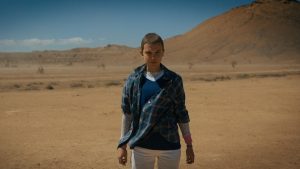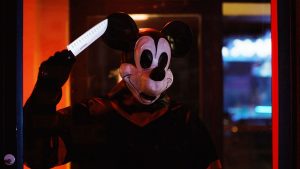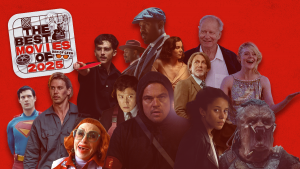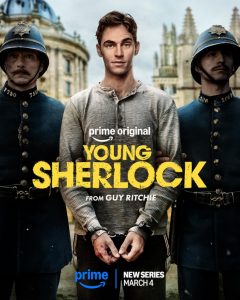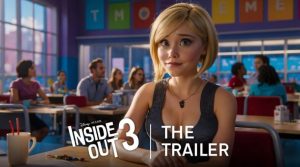
The 2000s saw the action genre in a state of flux. The Matrix revolutionized everything at the end of the previous decade, The Bourne Supremacy would make shaky cameras standard practice in 2004, and the MCU would take flight with Iron Man in 2008. At the same time, Michael Bay reached his ultimate form with Bad Boys II, Crouching Tiger, Hidden Dragon and Kill Bill made kung fu classy, and Oldboy changed the way we look at hallways.
Within those changes came a host of greats that didn’t get the same attention. Some of these movies represent the first steps in the development of those who would define the genre, such as Scott Adkins and Gareth Evans. Some find stars at the height of the powers, such as Donny Yen and Michael Jai White. And some are just cool, because that’s really all an action movie needs.
If you’ve seen all the hallmarks of the first decade of the new millennium, check out the best that most people overlook.
Whiteout (2000)
Ever since the John McTiernan classic made Bruce Willis into an action icon, execs and screenwriters have pitched movies with the simple sentence, “Die Hard in X.” Whiteout follows that grand tradition, presenting itself as Die Hard in Japan — which kinda make sense, given Nakatami Plaza. More specifically, Whiteout is Die Hard in a dam (in Japan), in which engineer Togashi Teruo (Yūji Oda) must fend off terrorists invading the Okutowa Dam in the middle of a blizzard.
Director Setsurou Wakamatsu makes excellent use of both the dam’s tunnels and its massive exterior face. His camera trails behind Teruo running through dark hallways, almost strangled by the walls around him, and then cuts to a wide shot of Teruo minuscule against the outside, highlighting his loneliness. Cutaways to bureaucrats arguing about the situation drag, but Wakamatsu wins viewers back with kinetic gunfights between Teruo and the terrorists.
Battle Royale (2000)
For a while, Battle Royale was the movie insufferable movie bros would mention while condescending to fans of The Hunger Games. Like the hit YA series, Battle Royale features a group of school-aged children sent to kill one another in a vicious tournament. Unlike The Hunger Games, however, Battle Royale doesn’t skimp on the violence and gore. Almost immediately, a teacher (Beat Takeshi) beloved by the young contestants murders a kid in cold blood. Toward the climax of the film, a quiet girl loses her cool and becomes a Jason-like slasher.
That explanation, along with a strong endorsement from Quentin Tarantino, shows why bros loved Battle Royale. But the movie has much more to offer than a long-past sense of cool. Adapting the manga by Koushun Takami, director Kinji Fukasaku and writer Kenta Fukasaku balance shock violence with humor and humanity. The satirical elements about Japan’s disregard of its youth population blend well with its surprisingly rich characters, ratcheting up the tension of the action scenes.
Tokyo Raiders (2000)
Although the action movies of the 2000s would soon turn to gritty realism, many movies retained the snarky humor of the 1990s. The Hong Kong hit Tokyo Raiders, starring Tony Leung and directed by Jingle Ma, provided martial arts action with big budget gloss. An early scene shows Leung’s Detective Lam Kwai-yan disarming assailants with an umbrella and cigars, set to a punchy Latin score.
Writers Susan Chan and Felix Chong write Tokyo Raiders as a twisty caper farce, with absurd characters such as an interior designer and (of course) the Yakuza. To be honest, some American viewers (well, me) might find some of the reversals hard to follow. However, between Leung’s movie star charisma and the outrageous fight sequences, plot details won’t matter.
Faust: Love of the Damned (2000)
Although the decade would end with the MCU on the rise, foretelling the genre homogenization that followed, the 2000s began with quite a bit of variety in the genre. Blade II, Spider-Man, and Hulk had little in common with each other, or with the MCU entries of the 2010s. But no superhero movie stands out more than Faust: Love of the Damned, an adaptation of the hyper-violent indie comic from director Brian Yuzna, featuring Jeffrey Combs and Andrew Divoff, with effects by Screaming Mad George.
If that last line sounds amazing, then let me pump the breaks a bit. Combs and Divoff really have supporting parts. The true star of Faust is Mark Frost. No, not the co-creator of Twin Peaks, but the English actor now best known for Coronation Street and Doctors. As John Jaspers, a man who makes a deal with the satanic M (Divoff) to get revenge on the gangsters who killed his girlfriend, Frost looks more like Jim Carrey than Christian Bale, resulting in unconvincing brooding that not even Combs, who plays a detective on the case, can rescue. However, once Jaspers takes his grotesque superhero form as Faust, with a fleshy-costume that looks like a mix of Wolverine and Batman, plot goes out the window and absurdity reigns supreme.
Brotherhood of the Wolf (2001)
The 2000s would see the launch of the Underwold franchise, perhaps the decade’s most enduring horror/action mashup. But the best genre crossing occurred overseas, with the French period piece Brotherhood of the Wolf, directed by Christophe Gans. Set in 1764 France, Brotherhood of the Wolf has a pulpy premise, in which the knight Grégoire de Fronsac (Samuel Le Bihan) and his Iroquois sidekick Mani (Mark Dacascos) investigate what appear to be wild animal attacks in a small village.
What follows from their is a conspiracy thriller that may or may not involve werewolves. Gans and his co-writer Stéphane Cabel play fast and loose with the specifics of the threats, but they make up for it with a delicious cast, which includes Vincent Cassel and Monica Bellucci. Even better are the stylish fight scenes, as Grégoire and Mani battle their mysterious adversaries, without truly understanding what they’re up against.
The One (2001)
Like Faust, The One also foreshadows a subgenre all the rage today: the multiverse. The One comes from the creative duo James Wong and Glen Morgan, known for some of the best episodes of The X-Files ever. Wong directs a script he and Morgan wrote, in which Jet Li plays Gabe Law, a policeman hunted by his malevolent double. Wong and Morgan go deep with the sci-fi worldbuilding, which involves the MultiVerse Authority (MVA, surely inspired by Marvel’s Time Variance Authority, then still a minor concept from Thor and Fantastic Four comics) and rogue agent Gabriel Yulaw (also Li).
Despite embracing The Matrix just a few years earlier, audiences in the 2000s found the dense world-building of The One baffling. However, modern viewers have been trained by Spider-Man: No Way Home and Everything Everywhere All At Once to accept such outrageous premises. And once they don’t have to worry about exposition, viewers are free to watch the martial arts spectacle of not one, but many Jet Lis.
The Musketeer (2001)
Peter Hyams is the quintessential 3-star director. All of his movies exceed expectations while failing to live up to their full potential, and The Musketeer is no exception. On the surface, The Musketeer sounds like the most 2000s concept of all time, a parkour-heavy, wuxia-inspired take on the Alexandre Dumas novel The Three Musketeers. Below the surface, well, that’s exactly what The Musketeer is.
And that’s not a bad thing at all. Hyams leans into the big stupidity of the concept, taking full advantage of the choreography from Hong Kong performer Xin-Xin Xiong, whose name gets dropped in the trailer. While none of the Musketeers, led by future Gray’s Anatomy star Justin Chambers as d’Artagnan, will stick in the memory, Tim Roth, Stephen Rea, and Catherine Deneuve all understand which movie they’re in and adjust the performances accordingly. Is The Musketeer a classic? No. But it’s the closest you can get to reliving the early 2000s without an eyebrow piercing.
Collateral Damage (2002)
Part of The Musketeer‘s failure owes to its release the weekend before 9/11. But the movie most undone by the terrorist attacks was the Arnold Schwarzenegger vehicle Collateral Damage. Even after Warner Bros. pushed the release date back from October 5, 2001 to February 2002, the public still had no appetite for a terrorism-heavy film.
Revisited decades later, Collateral Damage stands out as an effective two-fisted thriller. Directed by Andrew Davis, he of the equally excellent Under Siege and The Fugitive, Collateral Damage follows firefighter Gordy Brewer (Schwarzenegger) as he battles terrorists and bureaucratic morass to find the Colombian cartel that bombed the consulate. Davis’ instincts give the movie hints of a political thriller, adding depth to what remains a satisfying revenge flick.
The Rundown (2003)
Today, Dwayne “The Rock” Johnson is an action movie mainstay. But in the early 2000s, he was still more of a wrestler than an actor and worked hard to win over audiences. Johnson had no problem playing the heel if it resulted in an entertaining film, as seen in The Rundown. As bounty hunter Beck, Johnson put his million-dollar smile to good use, playing a thoroughly unlikeable character whose charms make him all the more irritating.
Hired to retrieve Travis Walker (Seann William Scott), the ne’er-do-well son of a mobster, Beck gets entangled in a mess of intrigue and power plays centered around a mine in the Brazilian town El Dorado. Director Peter Berg leans into the flashy style of the era, complete with freeze frame and video game-style graphics. However, writers R.J. Stewart and James Vanderbilt focus on the classic qualities of the story, making The Rundown more of an old-time buddy action comedy than a modern star vehicle.
S.W.A.T. (2003)
In 1969, the American public got their first proper look at the newly designed S.W.A.T. (special weapons and tactics) team in a highly televised attack on a Black Panthers headquarters. Although a tactical failure, the mission looked good on TV, so producers Aaron Spelling and Leonard Goldberg got to work. S.W.A.T. only ran for two seasons in 1975 and 1976, but that was enough for movie producer Neal H. Moritz to commission a big-budget version in 2003.
To be clear, 2003’s S.W.A.T. has the same reprehensible politics as its predecessor. The team deals out the same mass destruction as classic cop flicks form the ’70s and ’80s, and director Clark Johnson—best known as an actor in Homicide: Life on the Street and The Wire—shoots the weapons with a slickness that reaches Tom Clancy levels of military porn. That said, Johnson gets interesting performances out of his cast, which includes weird leading men Colin Farrell and Jeremy Renner, alongside character actors like Samuel L. Jackson, Reg E. Cathy, and Josh Charles.
House of Flying Daggers (2004)
Thanks to the success of Crouching Tiger, Hidden Dragon and greater international distribution, Americans had unprecedented access to martial arts films. While that helped draw attention to films that they would otherwise miss, such as the nationalist epic Hero, too many missed out on the beautiful House of Flying Daggers.
Directed by Zhang Yimou, House of Flying Daggers stars Andy Lau and Takeshi Kaneshiro as Leo and Jin, policemen working for a corrupt government, ordered to arrest Mei (Zhang Ziyi), the blind daughter of the leader of rebel group House of Flying Daggers. As they fall for Mei, Leo and Jin find their loyalties to one another and to their leadership challenged. Zhang, working with cinematographer Zhao Xiaoding and choreographer Ching Siu-tung present the internal and external conflicts with poetic imagery, fully transforming fight sequences into dance scenes.
Unleashed (2005)
Americans may have embraced Jet Li’s Hero, but his follow-ups Cradle 2 the Grave, a two-hander with DMX, and Unleashed didn’t get the same attention. A EuropaCorp production written and produced by Luc Besson and directed by Louis Leterrier, Unleashed lacks the shiny qualities of Besson’s best work and leans more toward the director’s gritty visuals. That approach suits the unpleasant story, in which Li plays a dehumanized mob enforcer called Danny the Dog, treated as an animal by his boss Bart (Bob Hoskins). After Bart’s death, Danny comes into the possession of kindly Sam (Morgan Freeman), a blind piano tuner who helps Danny find his humanity.
To be clear, Unleashed doesn’t reach the heights of its noble ideals. No, we don’t want to see Danny stuck on a leash and treated like an animal. But we don’t want to see him take up the cause of pacifism either. In order for Unleashed to work, strangely, Sam has to fail and Danny needs to give into his basest instincts. All thematic issues aside, Unleashed turns into a rollicking good time once Danny is indeed unleashed, resulting in awesome martial arts mayhem.
16 Blocks (2006)
16 Blocks is the type of meat and potatoes action flick that would get shoved to Redbox or Netflix these days, but works best in a packed theater. The premise is simple: burned out cop Jack Mosley (Bruce Willis) must escort witness Eddie Bunker (Yasiin Bey) to the courthouse 16 blocks away. Legions of gangsters stand in between points A and B, doing everything they can to prevent Mosley from completing that simplest of missions.
16 Blocks is the final movie from Richard Donner, the venerable director behind Superman: The Movie, The Goonies, and Lethal Weapon. Even at this late point in his career, Donner has all of his skills at the ready, and presents the story in real time to up the tension. As crazy as the fight sequences get, with bullets flying and debris exploding, Donner never loses sight of the central players, taking full advantage of the chemistry between Willis and Bey.
Severance (2006)
Some might object that Severance works more like a horror comedy than an action movie, and with good reason. Not only does writer-director Christopher Smith, who co-wrote the film with James Moran, largely make horror films, but the movie often feels like a slasher flick. Severance involves a group of English office workers (who just so happen to work for an arms company) who go on a team-building retreat in the Hungarian mountains, organized by their priggish manager Richard (Tim McInnerny).
The pain of forced social interactions soon turns into physical pains as masked killers invade and start taking apart the pencil-pushers. With a cast that includes Danny Dyer, Claudie Blakley, and Toby Stephens, Severance leans into winking jokes among the gore. But when the victims start fighting back, the story takes a turn toward action, despite the lack of attention from genre fans.
Undisputed II: Last Man Standing (2006)
Today, it’s hard not to see Undisputed II: Last Man Standing as something of a torch-passing film. Not so much between Ving Rhames and Michael Jai White, as the latter takes over in the role of George “Iceman” Chambers, which the former played in the 2002 Walter Hill film Undisputed. Rather, between White and Scott Adkins, as the English martial artist begins his rise in Undisputed II, currently occupying the place in B-movie royalty once held by White.
Undisputed II finds Iceman fighting in a series of underground matches in a Russian prison, which draws the attention of the mob. Iceman’s only help comes in the form of his drunken cellmate Yuri Boyka (Adkins), who helps him take on the increasingly brutal hordes. What could be a dull cash-in becomes an exhilarating exercise in bone-crushing battles, thanks to direction from Isaac Florentine, who would go on to work with Adkins in Ninja and Ninja II: The Shadow of a Tear.
Flash Point (2007)
The 2000s marked the decade that Americans learned about Donnie Yen, one of the most exciting Hong Kong action stars working today. His U.S. debut Highlander: Endgame didn’t give him the attention he deserved, and Jet Li overshadowed him in Hero. But those who found Yen’s 2007 Flash Point know why he’s a living legend.
Flash Point reunites Yen with director Wilson Yip, who made the 2005 hit SPL: Sha Po Lang and would collaborate again in the international breakout Ip Man franchise. Yen plays Detective Sergeant Ma Jun, who interjects in a gang war between three brutal brothers, played by Collin Chou, Ray Lui, and Xing Yu. The twisty plot by screenwriters Szeto Kam-Yuen and Nicholl Tang keeps your attention, but the real draw comes with watching Yen cross his co-stars in kinetic and thrilling fight scenes.
Tokyo Gore Police (2008)
As you might guess from the title, the real appeal of Tokyo Gore Police is the gore. Special effects supervisor turned director Yoshihiro Nishimura fills the screen with unholy visions and plenty of splatter, enough to turn the most steely of stomachs. But all the icky imagery comes via a standard action plot, written by Nishimura with Kengo Kaji and Sayako Nakoshi.
Set in a post-apocalyptic future in which grotesque post-humans called Engineers run rampant on the streets, Tokyo Gore Police follows Ruka (Eihi Shiina of Audition fame) of Tokyo PD’s Engineer Hunter Unit. Rather than arrest the offending Engineers, Ruka prefers to cut them into gooey pieces with her samurai sword. Ruka slices a path to the mad scientist behind the Engineers, creating awe-inspiring and gut-wrenching action scenes along the way.
Speed Racer (2008)
Time has been kind to Speed Racer, Lana and Lily Wachowski’s unexpected follow-up to The Matrix trilogy. The same movie goers who complained about the bloated self-seriousness of The Matrix Reloaded and The Matrix Revelations dismissed their candy-colored update of the 1960s anime series. Fans accustomed to wrap-around shades and kung fu didn’t know what to do with Sprittle and Chim Chim breaking the fourth wall with corny jokes.
It turns out, Speed Racer encapsulates the Wachowskis worldview better than almost any other of their works. An incredibly earnest work about the power of community and love to overcome the demands of capitalism, Speed Racer uses even wooden actors such as Emil Hirsch and Matthew Fox to great effect, alongside a perfect John Goodman and Susan Sarandon, as well as Christina Ricci as a living anime character. Together, they craft a story that’s revolutionary on a wholesome level, something somehow even more thrilling than The Matrix with its steadfast belief in good overcoming evil.
Punisher: War Zone (2008)
The first Punisher film from 2004 sometimes gets lumped in with Daredevil, Jonah Hex, and other 2000s comic book movie misfires, despite serving up a solid bit of throwback action. No one would make the same mistake with Punisher: War Zone, the absurdly violent follow-up directed by Lexi Alexander. Drawing from the tone of Matt Fraction’s gonzo Punisher: War Journal comics of the time, War Zone makes no attempt to humanize Frank Castle. Instead, he’s an unrepentant murderer who lives to dismember his enemies.
The prime enemy in this case is Jigsaw, played by a scene devouring Dominic West. The late, great Ray Stevenson steps in for Thomas Jane, making for the perfect Castle for the film, grim to a cartoonish degree. Punisher: War Zone bathes the viewer in chaos, which might be a bummer for those who see a noble dignity in the Punisher, but is great fun for everyone else.
Death Race (2008)
If the the 2008 Death Race didn’t exist, the universe would have somehow manifested it. No other film could be a better confluence of creative team, material, and time, as Paul W.S. Anderson and Jason Statham teamed to give a post-9/11 spin on Roger Corman’s classic Death Race 2000, about a deadly cross-country spectacle.
Set in a post-apocalyptic future, when America’s economic collapse has reverted the country to barbarism, Death Race focuses on a sport in which prisoners subject themselves to mortal harm for the sake of cheering viewers. The innocent but still awesome Frankenstein (Statham) must overcome the machinations of evil warden Hennessey (Joan Allen), who makes dirty money with the race’s success. A thoroughly unpleasant piece of late-2000s grime, Death Race is exactly what you’d expect from the above description, and all the better for it.
G.I. Joe: The Rise of Cobra (2009)
At the time of its release, G.I. Joe: The Rise of Cobra got lumped in with the dismal Transformers franchise, leading many to dismiss the film as another ugly, incoherent cash in based on ’80s toys. Worse, the film came after two disappointments for director Stephen Sommers, who followed the beloved The Mummy with The Mummy Returns and Van Helsing. Yet, those who did catch up with G.I. Joe: The Rise of Cobra found a fun adaptation and a (near) return to form for Sommers.
Rise of Cobra feels very much like the product of ’80s kids smashing their dolls… I’m sorry, action figures, together. Channing Tatum and Marlon Wayans play Duke and Ripcord, a pair of top-level soldiers recruited for a top-secret team under the command of Hawk (Dennis Quaid). With their new high-tech weaponry, the team must take down a terrorist organization led by Destro (Christopher Eccleston, delightful but not silver-headed until the end) and his lieutenants Baroness (Sienna Miller), Storm Shadow (Lee Byung-hun), and the Doctor (Joseph Gordon Levitt).
Merantau (2009)
In 2011, director Gareth Evans would signal a new era of action movies with The Raid: Redemption. But first, he closed out the previous decade with Merantau, the film debut of his frequent collaborator and star Iko Uwais. Uwais plays Minangkabau youngster Yuda, who leaves the village and experiences the world, as part of the titular rite. When local warlords terrorize one of the villages he hopes to visit, Yuda takes action against the oppressors.
Merantau plays very much as a rough draft for The Raid: Redemption, lacking the same polish and tension that would make that film so great. However, Evans and Uwais already have a strong creative rapport, making Merantau a thrilling film in its own right.
The post The Most Underrated Action Movies of the 2000s appeared first on Den of Geek.
